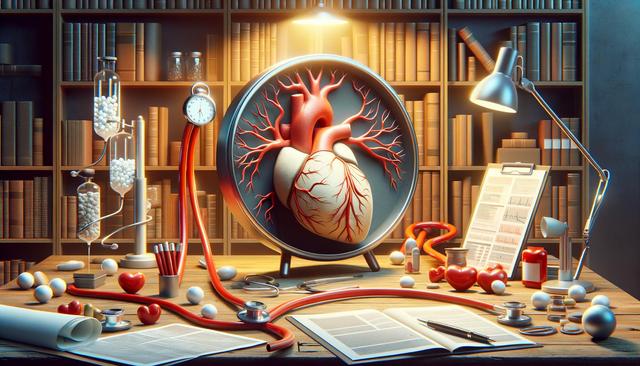Understanding What Blocked Arteries Are
Blocked arteries, also known as arterial plaque buildup or atherosclerosis, occur when fatty deposits accumulate along the inner walls of the arteries. This buildup can restrict blood flow and potentially lead to serious cardiovascular issues such as heart attacks or strokes. Arteries are responsible for transporting oxygen-rich blood from the heart to the rest of the body. When they become narrowed or blocked, the body’s tissues and organs may not receive sufficient oxygen and nutrients. This condition often develops over time, and many people may not realize they have it until symptoms become severe or an emergency occurs.
Some of the most common causes of blocked arteries include:
- High cholesterol levels
- High blood pressure
- Smoking
- Diabetes
- Obesity
- A sedentary lifestyle
While some risk factors are genetic or age-related, many are influenced by lifestyle choices. Early detection and management can reduce the risk of serious complications and improve long-term health outcomes.
Chest Pain and Discomfort
One of the most recognizable warning signs of blocked arteries is chest pain, also referred to as angina. This discomfort is usually felt in the center or left side of the chest and may be described as pressure, squeezing, fullness, or pain. It often occurs during physical activity or emotional stress and typically goes away with rest. However, not all chest pain is related to heart issues, which is why a medical evaluation is essential.
Other sensations related to chest discomfort include:
- A burning feeling similar to heartburn
- Pain that radiates to the shoulders, arms, neck, jaw, or back
- Shortness of breath accompanying the pain
It is important to note that chest pain may present differently in women than in men. Women are more likely to experience symptoms like nausea, fatigue, or back pain instead of the classic chest pressure. Therefore, any unusual chest sensations should not be ignored, particularly if they occur repeatedly or worsen over time.
Fatigue and Weakness
Feeling unusually tired or weak, especially during or after physical activity, can be another sign of reduced blood flow due to blocked arteries. When the heart struggles to pump enough oxygen-rich blood because of narrowed arteries, the muscles and organs do not receive the energy they need to function efficiently. This can lead to persistent fatigue even after adequate rest.
Fatigue related to heart health may come with other symptoms, such as:
- Lightheadedness or dizziness
- Difficulty concentrating
- Shortness of breath
- General feeling of being unwell
Although fatigue can be caused by many different conditions, when it is new, severe, or unexplained, it may be worth discussing with a healthcare provider. Identifying and addressing blocked arteries early can help prevent more serious cardiovascular events.
Shortness of Breath
Shortness of breath, especially when performing activities that were previously easy, is a symptom that should not be overlooked. This may indicate the heart is not pumping efficiently due to reduced blood flow through narrowed arteries. The lungs and muscles may not receive the oxygen they need, leading to labored breathing or the need to stop and rest more frequently.
Shortness of breath may be experienced in various ways, such as:
- Feeling winded after climbing stairs
- Needing to sleep propped up with pillows
- Waking up gasping for air during the night
These symptoms can overlap with other conditions like asthma or lung disease, but when associated with heart-related issues, they often occur with other signs such as fatigue and chest discomfort. A thorough evaluation can help determine the root cause and guide appropriate treatment.
Other Subtle Symptoms to Be Aware Of
In addition to the more prominent symptoms, blocked arteries can also present with less obvious signs. These may include discomfort or pain in the extremities, particularly the legs, which could indicate peripheral artery disease—a condition related to blocked arteries in the limbs. Coldness in the lower legs or feet, slow-healing sores, and cramping during walking are also indicators to consider.
Other subtle warning signs may include:
- Irregular heartbeat or palpitations
- Swelling in the feet, ankles, or legs
- Excessive sweating without exertion
- Difficulty with physical exertion that was once manageable
While these symptoms may not immediately point to blocked arteries, they can be part of a broader picture of cardiovascular health. Monitoring changes in how the body responds to everyday activities can provide valuable clues for early detection and intervention.
Conclusion: Listening to Your Body
Recognizing the warning signs of blocked arteries is crucial for maintaining heart health and preventing more serious conditions such as heart attacks or stroke. Symptoms like chest pain, fatigue, and shortness of breath should be addressed promptly with a healthcare provider. Even subtle signs may indicate an underlying issue that warrants further investigation.
Adopting heart-healthy habits—such as eating a balanced diet, exercising regularly, managing stress, and avoiding tobacco—can reduce the risk of arterial blockages. If you notice any changes in your physical health or experience recurring symptoms, seeking medical advice early can make a significant difference in long-term well-being.


